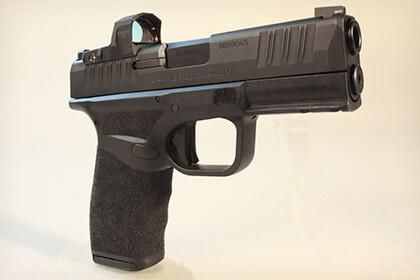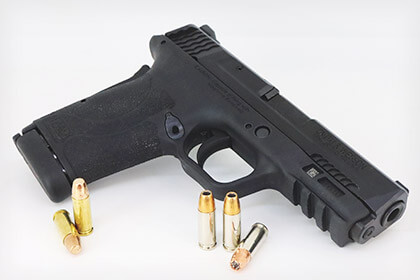Quite possibly, for the very first time, all three Gun Cranks agree on something — open carry is stupid! In this episode, the Gun Cranks share various reasons and examples to back up their claim. Do you agree or disagree?
Category: Fieldcraft

There are a lot of ways to defend your family at home. Several of them work well. There are also a lot of ways to get into trouble in the middle of a confusing situation with a gun in your hand. We want to learn from other people’s experience rather than from our own failures. That explains why a self-defense plan is so valuable. We want to do the best we can so that luck is less of a factor in our family’s safety.
Let me give you a counter example. I’ve heard people say they will figure out what to do when the time c0mes. I have a problem with that since we come up with some terrible ideas in the middle of the night. I’m pretty sure that I can improvise with the worst of them.
My plans are simple. We plan to lock our doors because we don’t want to wake up in the middle of the night with a bad guy standing in our bedroom. Locking our doors does a number of good things for us. For one, the robber often moves on to try another home if our doors are locked. That is a win right there. The second advantage of locking our doors is that the bad guy makes a lot of noise as he is kicking down our door or smashing one of our windows. That wakes us up and gives us some warning. Now, we and the bad guy are locked in a race to see who does the best job in a limited amount of time. If we thought about it, we’d know what to do when glass breaks. Our hands and feet would know what to do even if our head is still trying to wake up.
In our case, we no longer have kids in the home so this is what our home defense plan looks like.
As I implied, our doors are locked at night. We are also armed most of the time when we’re out of bed. At night, we store our firearms in bedside safes on each side of the bed. A flashlight and phone is also on each bedside table. That is the hardware side of a plan, but the human side of a plan is far more important. What should we do if we hear glass breaking in the middle of the night?
The easiest way to tell if someone has actually walked through their safety plan with their family is to ask them what they plan to say to their partner when they hear glass break. Unless the words fall out of their mouth then they don’t have a plan. We kept it simple.
“We have an intruder. Get up.”
That seemed a good compromise between information and time. Sure, we’d like to fully describe what we think we heard and what we saw. All that takes time that we might not have.
We chose to lock the bedroom door and turn on the lights. We also want to get on the phone and call 911. You have to do one thing at a time, particularly when you are still waking up. Some couples have planned who does which job. That can be particularly important if you have children in your home.
Given that it takes time to wake up and move, we figured the first person to stand up with a gun in their hand should go lock the bedroom door and turn on the lights. The other partner grabs their phone and their gun, and then moves behind the bed. We are worried about immediately stopping a threat until the door is locked and both of us are behind the bed and armed. Until then, we each have a gun in our hand and our attention on the door. Unless we hear an unexpected noise from inside our house, our guns stay pointed at the floor until both of us are behind the bed.
Should we shout a warning? We plan to. Again, we chose to keep it simple.
“We’re armed. We called the cops. Get out.”
Both of us now either have our guns in our hands pointed at the door or the gun is laying on the bed right in front of us as one of us calls 911. If you’ve practiced this then you know that guns are heavy and police are slow. If we don’t hear any more noise from outside our door then we will probably set our guns down on the bed before the police arrive.
Getting the police at your home is a good step but it also raises the next concern. What do you do once the police arrive?
We want the officers to walk around our house and look for obvious signs of entry. If they find an open door or broken window, then the police clear our home before we leave our bedroom.
If the outside doors are locked and the windows are intact, then we have to open the bedroom door and go meet the police. There probably isn’t an intruder in our home, but we did hear something so we’ll move slowly. We’re not going to clear every room and we are definitely not going to approach our doors with a gun in our hand. We rehearsed getting to our door step at a time.
Our hands are full. One person has a flashlight and a gun. The other person has a gun and a phone. The person with the light leads the way.
We have to leave our bedroom and scan the area with our flashlight. Slowly move to turn on light switches, and look all around your home. It is easy to move faster than you can look. You see new areas with every step and you want to make sure you are not walking into trouble. Keep your distance from corners.
The person with a phone is still in contact with 911. They’ve told the police that you are both armed. They are following the person with the light and they want to be close enough to help their partner. You also want to be far enough away that you have time to see and react to an attacker before the attacker can reach you. It makes sense to tell the person in front of you to slow down if they get too far ahead.
Now we are one corner away from the door where we will meet the police. I do not want the police near the door until I scan the area and am sure it is safe. I’m going to look around the corner and make sure the entryway is clear. The gun is not pointed around the corner because I do not have a target that needs to be shot. I’m going to put my gun and light on the ground if I don’t see a stranger in my home. Then, and only then, will I open the door and meet the police with my hands open and high.
When the officers are at the doorway I’ll ask my partner who is looking at me from behind the last corner to put down their gun and their phone. With the police there, we quickly search our home to make sure it is safe.
That is the simplest scenario. What if you hear someone in your house as the police arrive? What if you see someone in your house as you move toward the front door?
What fits my situation might not fit yours. Why not walk through your plan with your partner tonight. I bet your plan will change as you do.
A man was brought to our hospital while unresponsive. He was a possible drug overdose case. When one of the technicians was stripping his clothes off, he found a baggie containing almost 100 grams of what looked like crystal meth in the patient’s pocket. The technician turned it over to the charge nurse, who immediately called the local gendarmes.
By the time a cop arrived, the patient was awake and denied that the drugs were his. The police took photos, fingerprints, and ID from the technician and the charge nurse. According to the cops, since the the nurse and technician admitted to having possession and control of the drugs, they just admitted to felony possession of methamphetamines with intent to distribute.
Since the two voluntarily called the cops, they said that no arrest would be made on the spot, but claimed that they will be turning the information and evidence over to the State’s attorney for possible prosecution.
There is an important lesson there: Don’t fucking talk to the cops, no matter what. They aren’t your friends. They aren’t there to help you. They are there to make a case to arrest someone, and they will get the arrest that requires them to do the least amount of work they can. They get to pad their stats and look good for getting a felony collar without having to do any police work at all.
The tech told me that if there is a next time, he is flushing that shit down the toilet.
Congratulations, cops. You just pissed off an entire ED full of the doctors and nurses you depend on every day, turning them from coworkers of a sort into a department full of people that no longer like or trust cops. Even if the charges don’t stick, people remember stuff like that. Nice move, idiots

If interested go see the Duke in last movie – The Shootist. Especially when he gives a shooting lesson. Grumpy
DEADLY DEA By Bob Pilgrim

NOT INVENTED HERE SYNDROME
The Bureau’s Firearms Training Unit (FTU) consisted of many talented and dedicated agents, but was plagued with a stagnating attitude of the “not invented here syndrome.” They were reluctant to even consider outside ideas especially from the private weapons training sector. Fortunately the DEA believed in training and frequently sought knowledge outside of the organization, resulting in the discovery of a lot of good ideas out there. As a result, DEA’s tactical and firearm’s programs were enriched and moved into the 21st century.
WHERE THE ACTION IS
As a Marine returning from Vietnam, a veteran federal investigator told me, “If you want action on regular basis, join DEA. They get into more gun battles with desperate dopers than any other agency and they have some of the toughest agents in the business. They kick butt all over the world.”
After two infantry tours and an extended advisory billet in SE Asia I wasn’t interested in more run and gun. After becoming an FBI agent instead, I discovered the DEA admonition was true. It’s even reflected in the differences for new agent Academy dress. DEA candidates dress like Darth Vader, with black BDU trousers, black combat boots and gray golf shirts. FBI agents look like models for the Lands End catalog. The NARCO hunters approach training with a military mindset.
Students double time everywhere and stand when an instructor enters the classroom. They’re told it’s not a question of if, but only when you will exchange rounds in anger with a criminal — some within weeks of a field office assignment. — Fiftyone federal agents have been killed in the line of duty.
INTERNATIONAL BATTLES AND TERRORISM
DEA Unit Chief Frank White, a Silver Star awarded air-borne veteran of Vietnam, had six gun battles to his credit be-fore arriving at Quantico. He also took over Operation Snow-cap, which sent Special Operations trained DEA agents to fight cocaine production and shipment in Latin America.
DEA agents are also wearing body armor, helmets and carrying assault rifles into the jungles of SE Asia and poppy fields of Afghanistan to take America’s war on drugs to the sources of production. Drugs and terrorism go hand in hand and DEA is intimately involved in fighting entities financing logistics and operations through drug sales. DEA agents have developed some of our most outstanding counter terrorism informants.
THE DATA
I thought it might be interesting to compare DEA’s stats with NYPD’s experiences in 2005. In 2005, NYPD had 35,000 members. While some may accuse me of comparing apples to oranges, I thought it would be an engaging exercise if only for academic purposes.
TIME OF WEEK
As the week ends, Thursday saw the most shootings for DEA with 13 and Sunday was a close second with 12. So much for those critics that claim government workers shut down for the weekend. Friday was third with 10 incidents. Compared to NYPD with 123 incidents in 2005, Saturday was their most active with 24 occurrences.
TIME OF YEAR
The beginning of colder weather ushered in the majority of armed encounters with September accounting for ten gun-fights followed by eight in May. December grabbed the three spot with only six. Obviously, in some parts of the world where these battles took place our winter is their summer.
NYPD experienced 16 shootings in October and July was next with 13.
TIME OF DAY/NIGHT
The vast majority of the gunplay, or 42 engagements, occurred during the day while the remainder took place at night. While most peoples’ work day was ending, DEA was just getting started and managed to contact violent suspects 17 times between 1601 and 2000 hrs. From there on to midnight, another 11 were accommodated, but 0801 to 1200 actually garnered second spot with 12. The Big Apple’s finest got most of their trigger time on the graveyard shift from 0400 to midnight with 38.
INVOLVED WEAPONRY
Handguns dominated as the agents’ weapon of choice during emergency response in 49 incidents. The 5.56x45mm rifle or carbine over-shadowed the 9mm sub guns in 26 and six incidents respectively. Shotguns still enjoy life in the DEA and were broken out for six engagements.
However, long guns were used to fire more rounds in anger than handguns with 176 versus 157 respectively. Sub guns came in a distant third with 64 directed at hostiles and shotguns launched the contents of 16 shells at suspects war-ranting deadly force.
NYPD used pistols in 156 conflicts, revolvers in 4, and submachine guns and shotguns in one each.
BAD GUYS ARMAMENT
Conversely, the bad guys opted for pistols or revolvers and peppered the LEOs with 11 rounds, followed by some type of rifle/carbine with seven shots and shotguns accounting for four.
MAN’S BEST FRIEND?
Dogs figure prominently in these confrontations and when I was working with the DEA, 25 percent of the shootings involved K-9s. In 2007 there were 31 encounters with dogs and 75 shots were fired. Three years ago, NYPD officers fired 93 rounds at the land sharks.
DREADED SEARCH WARRANT
DEA still encounters most of their resistance during the execution of search warrants followed by arrest situations with 25 and 10 discharges respectively.
CARELESS GUN HANDLING
Unintentional discharges reflect poorly on the weapons discipline of any agency. Unfortunately, they are the second most prevalent cause of weapons firings in DEA — noting an increase from 2006 to 2007 by a factor of five. DEA agents caused eight, and four were attributed to other personnel for a total of 12. Ten handguns and two rifles were involved.
Most occurred during care and cleaning and unloading procedures prior to firearms storage. Eight involved Glocks and one each with a Colt Commander and Smith and Wesson revolver. NYPD had 25 “accidental discharges.”
MOBILE WEAPON
Vehicles were used by suspects in 10 assaults and the majority occurred during buy/bust ops. Deadly force was employed primarily in cases where the suspects were able to defeat the attempted vehicle containment techniques.
LESSONS LEARNED
We shoot at people not cars. The car may be the target, but the person operating it is the X – ring. With the small arms available to law enforcement, the automobile is a virtual armored vehicle and the suspect enjoys a substantial amount of projection. Except for bonded ammunition, 5.56x45mm is not effective on auto glass and steel.
A fleeting target, vehicle glass must be compromised first before rounds can be effective against suspects. The only time the Israeli police use full automatic fire from shoulder weapons is when they encounter a hostile moving vehicle.
Gather intelligence and plan ahead for K-9 avoidance and or humane neutralization. Use non-lethal means if possible. Firing at a relatively small, rapidly moving and highly determined threat invites potential fratricide.
No matter how experienced you are, no one is above safety and safe weapons handling. Treat all guns as if they are loaded all the time. Check and recheck and keep your finger off the trigger unless you are preparing to fire. Always keep the muzzle pointed in a safe direction or in the direction that it will do the least amount of dam-age should it go off. Never dry fire in the office and never dry fire when live ammunition is present.
Search warrants are particularly dangerous, because the fruits of the crime must be seized to make the case or culminate in an arrest. As a result, speed is often essential after the element of surprise is derogated. Speed can sacrifice control and lead to tactical mistakes that are advantageous for your adversary. Instead, try to gather enough evidence by other means and serve an arrest warrant in-stead. Careful. Hurry.

2021 was an extraordinarily bad year for bear attacks. Between 2000 and 2015 there were, on average, 1.6 fatal bear attacks in the United States per year. As of the end of August 2021 there have been six. Bear populations continue to expand and humans increasingly come into contact with these animals more often. Grizzly populations have expanded to over 700 in the Yellowstone ecosystem, and their range has tripled in the last four decades. But black bear numbers are also on the increase, and as more humans venture into their habitat bear/human conflicts, though still rare, and happening more frequently.
Whether you’re a hunter, hiker or simply live in bear country it’s a good idea to have a firearm that can stop a bruin should the need arise. Large-caliber pistols and revolvers are the obvious choice since they are easy to transport but still offer effective bear-stopping power. Here’s a look at eight of the best bear handguns, from least expensive to most expensive.
1. Smith & Wesson M&P M2.0 10mm

This a striker-fired, polymer-frame pistol that comes with a 15 round magazine and a slide that’s cut for optics. If maximum concealment is what you desire there’s a 4-inch version, but the 4.6-inch model shown here offers a bit more sight radius yet it weighs just 29 ounces and would be my choice. These guns come with optics plates and four interchangeable backstraps that allow you to find the right fit.
M2.0 texturing on the grip surface does an outstanding job keeping the gun planted while still being comfortable, and the M&P M2.0 10mm is a very manageable gun to shoot quickly and accurately. The rugged design means it’ll stand up to anything Mother Nature dishes out, and the gun I tested performed flawlessly with powerful 10mm loads. $654–$665. Smith-Wesson.com
2. Rock Island Armory TAC Ultra FS 10mm

I spent over a week touring around Alaska’s backcountry from Kenai to the North Slope, and the Rock Island Armory TAC Ultra FS 10mm was my constant companion. It comes with a Parkerized matte finish on the steel slide and frame, and it is equipped with functional, stylish G10 grips. It features a rail that allows you to mount a light on this pistol, which is always a good option in bear country. Magazine capacity is 8 rounds, the fiber optic front sight is easy to see in low light, and the crisp trigger helps make this gun very accurate.
Perhaps most importantly, reliability is exceptional. I carried the Rock Island Armory 10mm in a GunfightersInc Kenai chest rig that kept it out of the way yet easy to access. I could even sleep with the gun on my chest in my sleeping bag. Having this gun close at hand offered a great deal of comfort when large predators prowled around in the darkness beyond the tent walls. $806. Armscor.com
3. Springfield XD-M Elite 3.8” Compact OSP 10mm
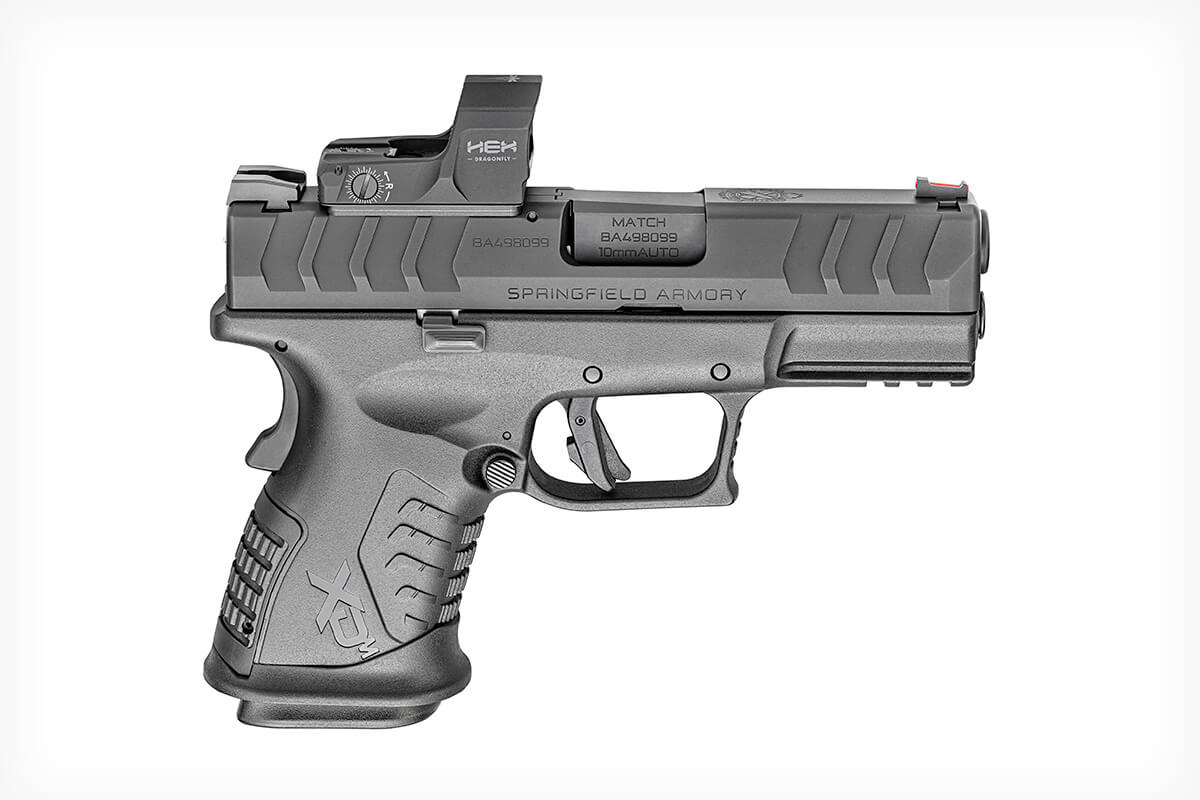
The 10mm has become the bear defense cartridge of choice for many backwoods hunters, offering plenty of stopping power with hot loads and a higher capacity than revolvers. One of the best 10mms on the market is the new XD-M Elite 3.8” Compact OSP from Springfield. With a weight of 27 ounces and an overall length of 6.75 inches, the Springfield could conceivably be carried concealed, but in a chest or hip holster it isn’t a burden.
It comes with a Springfield Hex Dragonfly red dot optic installed. Two 11-round mags come standard, and the flared mag well helps manage recoil. There’s also an option 15-round magazine as well. The polymer frame and Melonite finish are durable and stand up well to even the harshest environments. $818. Springfield-Armory.com
4. Ruger New Model Super Blackhawk
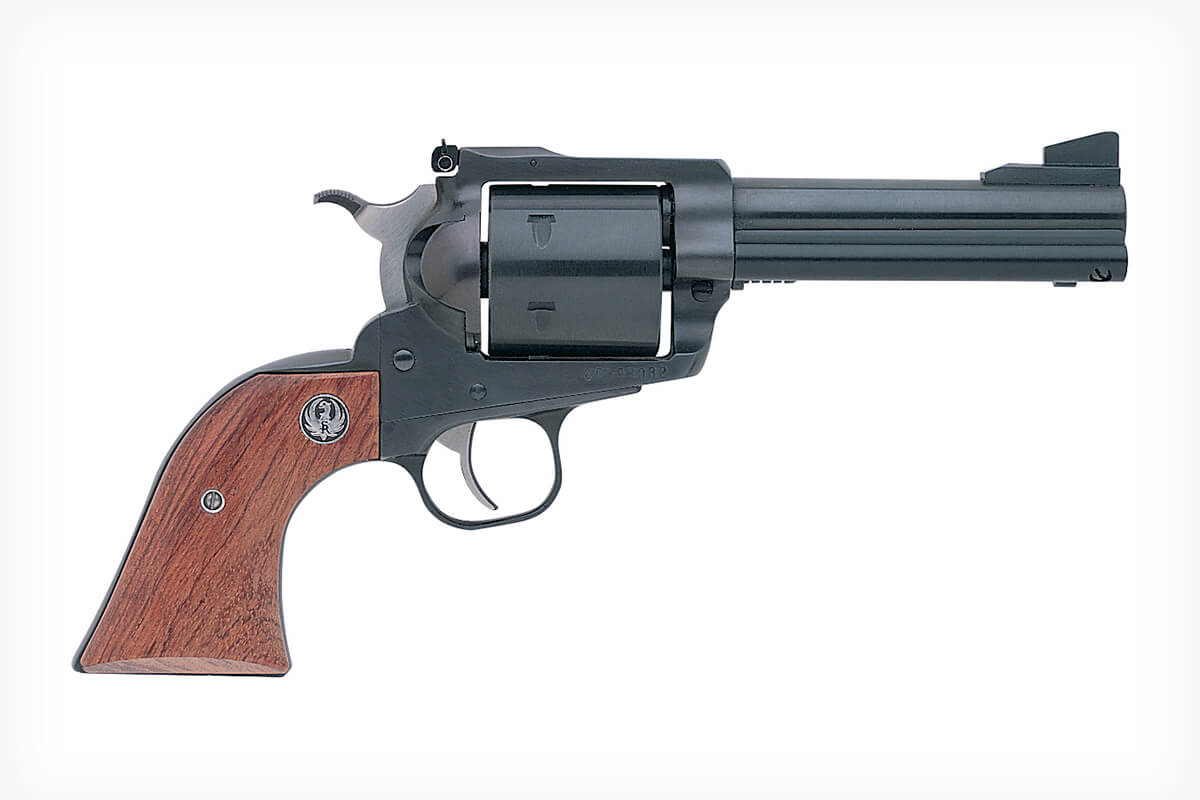
There’s still a place for single-action revolvers, and if that’s your weapon of choice the New Model Super Blackhawk is a great option. There are multiple configurations, but the 5.5-inch version shown here balances portability and shooting comfort. At 45 ounces this pistol can be worn on the hip, but these guns are capable of outstanding accuracy and, in experienced hands, offer fast follow-up shots.
The beefy steel frame and coil springs are robust and will survive hard use and this gun comes standard with a transfer bar for added security. It will hold six rounds of .44 Rem. Mag. for bear defense, but you can also load it with milder .44 Special ammo for target shooting and training. The blued finish and contrasting wood grips look good and feel good in the hand. The New Model Super Blackhawk is as sensible a choice bear defense, and that’s why it has been so popular with backcountry hunter for so many years. $989. Ruger.com
5. Smith & Wesson Model 29/629
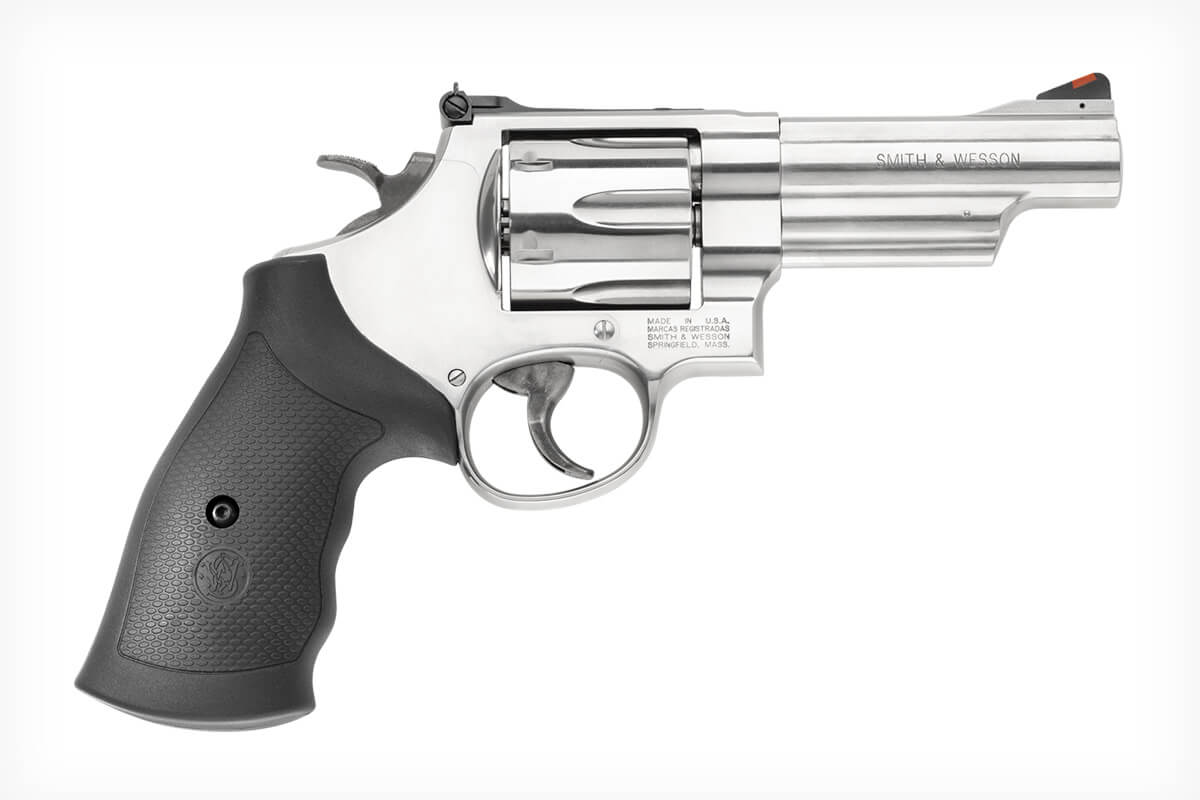
Big-bore revolvers are the classic backup gun in bear country, and one of the most popular options is Smith & Wesson’s six-shot .44 Magnums. The Model 29 and Model 629 are built on S&W’s vaunted N-frame and pack enough punch that, with the right bullets, they’ll stop even the largest bear. There are a number of good .44 Magnum bear defense loads and the 29/629 revolvers handle this round’s recoil effectively.
There are a variety of 29 and 629 models currently available, but the model shown here with a .4125-inch barrel is compact enough to carry yet has enough gun weight to tame powerful .44 Mag. loads. Of course, the 629 also fires .44 Special ammo for low recoil training. $989. Smith-Wesson.com
6. Springfield Range Officer Elite Operator 10mm
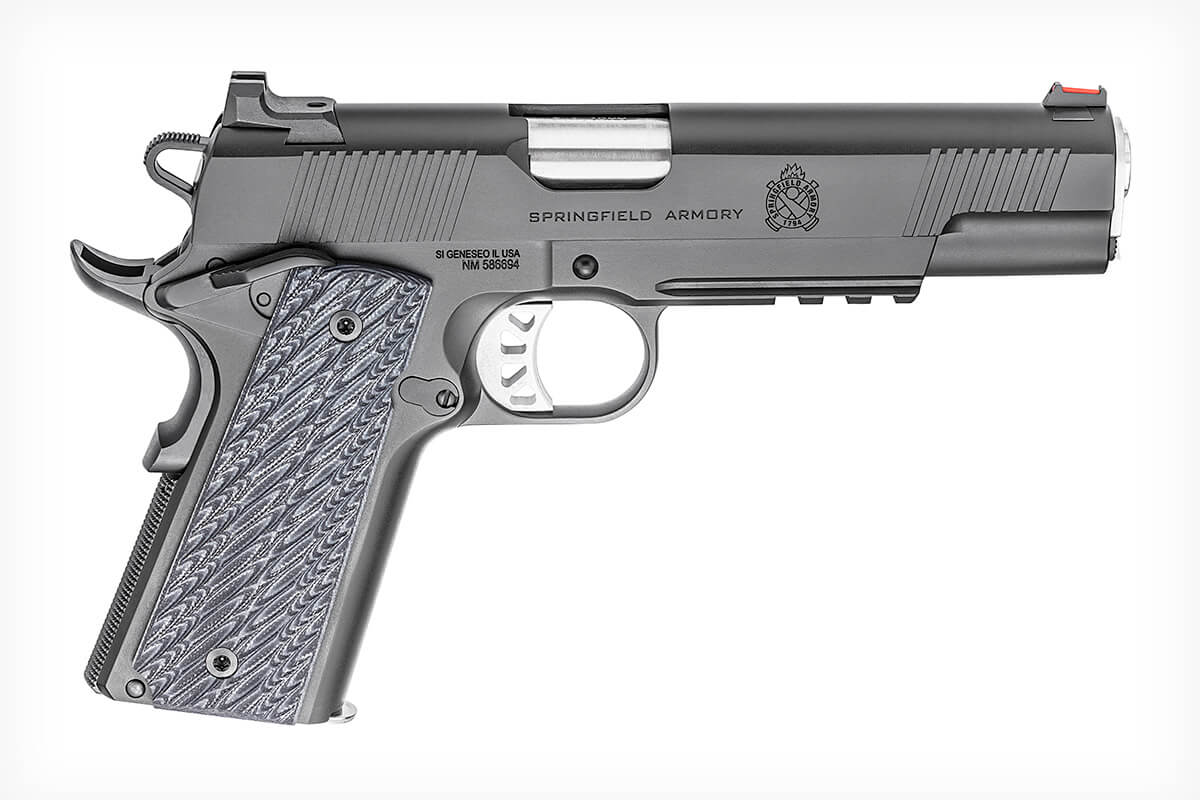
The Springfield is a 10mm 1911 with 5-inch barrel and comes standard with premium features like a durable Cerakote finish on the carbon steel slide and frame and Thin-Line G10 grips are both attractive and functional. The sights are robust and easy to see and the rear slight has a tactical ledge that allows you to operate the slide one-handed under the worst conditions (like a bear attack).
Other key features include accessory rail, a crisp, skeletonized trigger, 18.5-pound GI-style recoil system, and front and rear slide serrations. The 41-ounce weight helps recover from recoil more quickly and deliver faster shots on target.
Two 8-round mags come standard with the robust RO Officer Elite Operator. This gun is fun to shoot and is a solid option for the back country hunter. $1,145. Springfield-Armory.com
7. Kimber Camp Guard 10
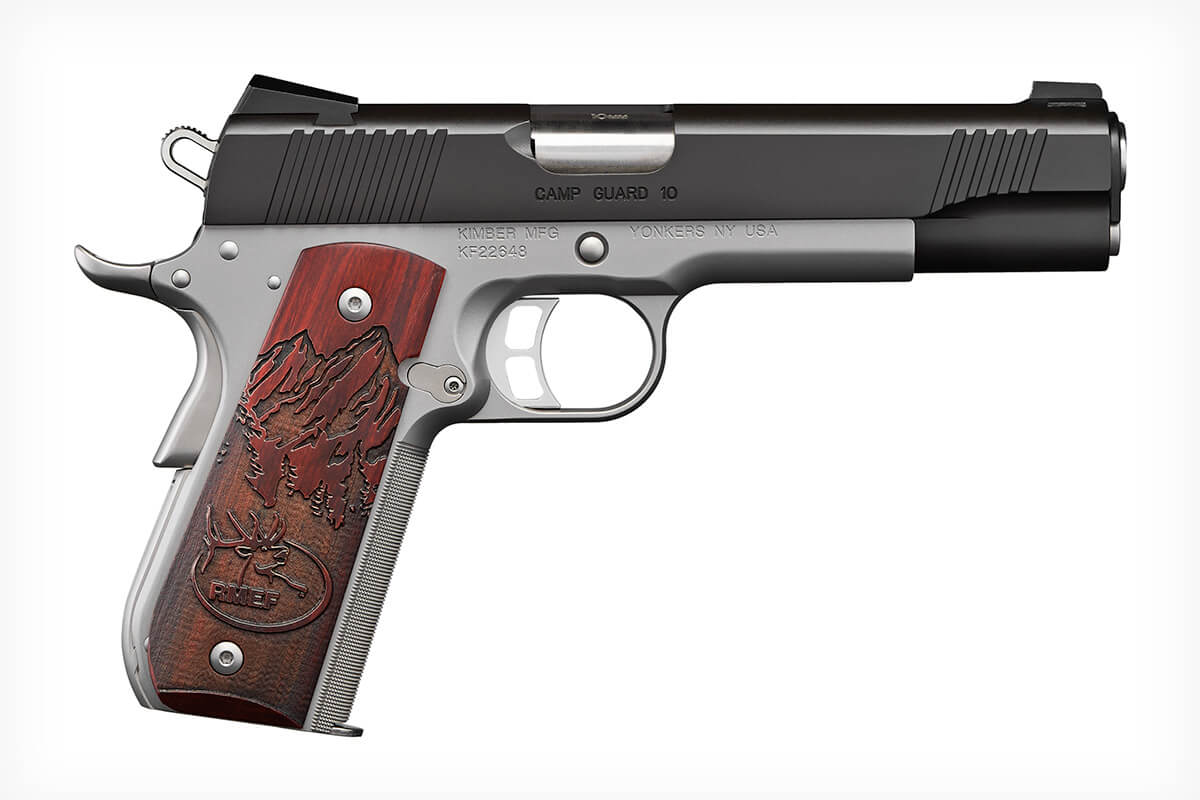
Designed in conjunction with the Rocky Mountain Elk Foundation, the Camp Guard 10 is a striking 10mm 1911 that comes equipped with stylish rosewood grips, a satin silver stainless steel frame with round heel and a KimPro matte black slide. But this gun is about more than just a pretty face. Front and rear serrations make the slide easy to manipulate, tactical wedge night sights come standard, and the trigger breaks between 4 and 5 pounds. The magazine holds eight rounds, which is more than you’ll get from most revolvers, and at just 38 ounces unloaded it won’t weigh you down in the backcountry. $1,339. KimberAmerica.com
8. Ruger Super Redhawk Alaskan
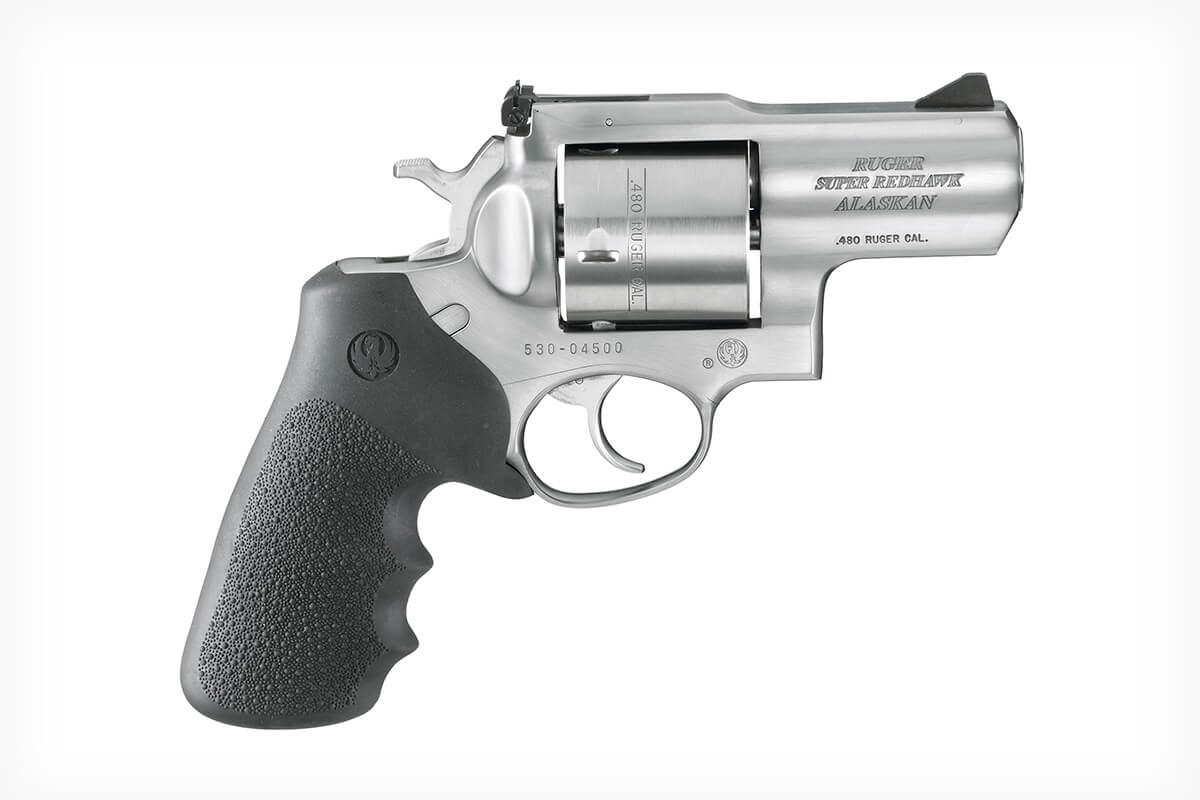
The Super Redhawk Alaskan offers rock-solid build quality and the reliability of a double-action wheelgun. With its 2.5-inch barrel this gun is far more portable than larger Super Redhawks, but with a weight of 44 to 45 ounces the Redhawk Super Alaskan still handles recoil effectively. The oversize Hogue Tamer Monogrip is comfortable and offers complete control over the gun, and the triple locking cylinder design allows this durable wheelgun to handle hot, high-power bear loads without breaking down.
Chambering options include .44 Rem. Mag., .454 Casull, and .480 Ruger, all of which offer substantial bear-stopping power. The Ruger certainly qualifies as a hand cannon, but it’s exceptionally rugged and manageable to shoot, making it a solid option for bear defense. $1,419. Ruger.com


